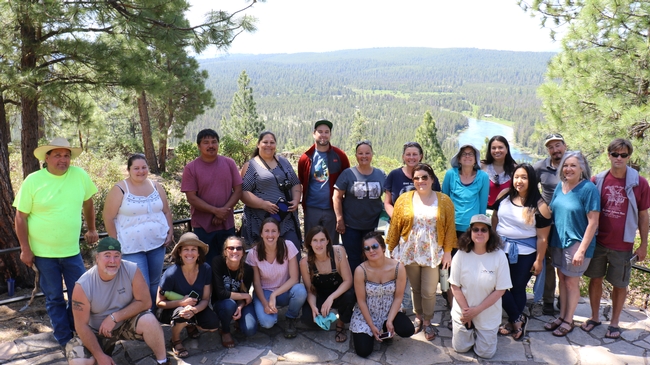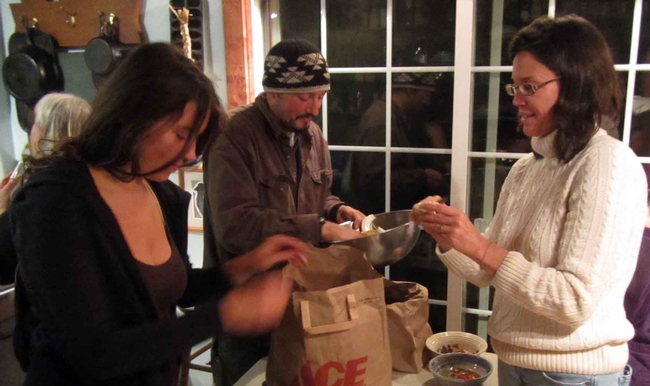
Posts Tagged: people
Benefits of Plants to People, Communities, and Urban Urban Ecosystems: Part 1
Benefits of Plants to People, Communities and Urban Ecosystems: Part 1:
The link between horticulture and health and well-being and to urban ecosystems has been scientifically documented for centuries. In 1812, psychiatrist, professor, and Declaration of Independence signer Dr. Benjamin Rush reported in his book “Medical Inquiries and Observations, Upon the Diseases of the Mind” (Rush 1812) that patients “digging in the dirt”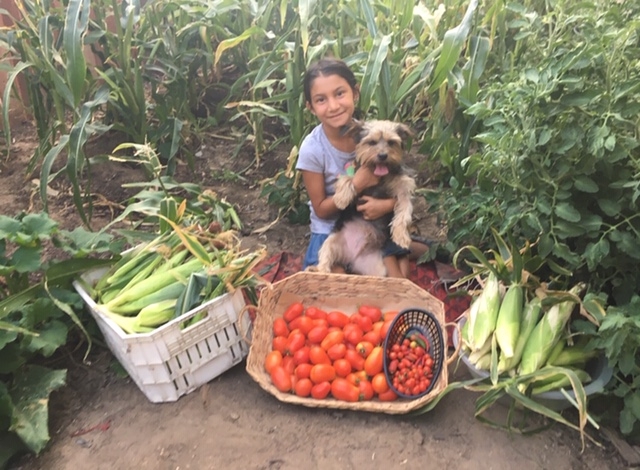
Benefits related to cognitive functioning, societal and community health, and mental health are summarized below. Ecosystem and physical health benefits from interacting with nature will be discussed in next month's blog.
Improved Cognitive Functioning
Several studies link participation in gardening activities to enhanced cognitive functioning (Bratman et al. 2012; Dadvand et al. 2015; Kuo et al. 2021; Ohly et al. 2016; Park et al. 2019; Stevenson et al. 2018; Wells 2000. Research conducted by Kuo and Sullivan (2001) and Mayer et al. (2009) found that exposure to nature in urban settings can enhance attention span, working memory, and concentration. Both youth and adults who participate in greening and gardening projects were also found to have higher cognitive functioning in the areas of short and long term memory, focus and concentration (Dadvand et al. 2015; Markevych et al. 2019; Matsuoka 2010; Meuwese et al. 2021; Park et al. 2019; Stevenson et al. 2018) and reduced symptoms of ADHD (Faber Taylor and Kuo (2011).
Other studies summarized in a literature review (Williams and Dixon 2013) found that kindergarten and middle school students who participated in school gardening activities linked to classroom learning in biology, nutrition, mathematics, and other subjects earned higher grades and attained greater academic achievement than non-participants. A recent study linked high tree canopy coverage on school grounds with higher achievement scores in math and reading in middle school students across a wide range of socioeconomic and ethnic backgrounds (Kuo et al. 2021). The experiential (hands-on) learning elements of school gardens can also bridge the gap between traditional and non-traditional learners due to its multi-sensory nature (Kolb and Kolb 2005). School gardens play an especially important academic role among elementary-aged youth from low-wealth inner city communities exposed to outdoor experiential learning that was previously lacking (Dyg et al. 2020; Kuo et al. 2021; Ray et al. 2016; Williams et al. 2013). However, Hoover et al. (2021) found that successful, sustainable school gardens require strong administrative and district support in addition to enthusiasm and support from parents and teachers.
Enhancement of Societal and Community Health
Urban greening projects that remediate vacant land, landscape streets and neighborhoods, create community gardens, and improve the health of wetlands and undeveloped natural environments can build community cohesiveness, neighborhood bonding, and mutual community pride (Diamant and Waterhouse 2010; Draper 2010; Glover et al. 2005; Hartwig and Mason 2016; Kuo and Sullivan 2001; Moyer et al. 2019; Neo and Chua 2017; Saldivar-Tanaka and Krasny 2004). With blighted uncared-for vacant lots comprising nearly 15% of total land area of U.S. cities (Branas et al. 2018) these opportunities are substantial. Results also indicate that gardening and urban greening projects unite people from different cultural and ethnic backgrounds who enjoy growing and sharing produce from their native regions (Agustina and Beilin 2012; Baker 2004; Cruz-Piedrahita et al. 2020; Dyg et al. 2016; Hartwig and Mason 2016; Teig 2009). Building a sense of community through social engagement, celebrations, and communal meals has also been found to benefit both gardeners and non-gardener participants (Ober et al. 2008).
Well-designed and maintained urban green spaces not only bring people together, but can reduce crime, gun violence and enhance the safety and cohesiveness of urban neighborhoods, as summarized in several literature reviews (Bogar and Byer 2016: Mancus and Campbell 2018; Shepley et al. 2019). Some of the strongest links reported in the literature involve crime reduction in vegetated and well maintained urban neighborhoods and walkways (Branas et al. 2018; Demotto 2006; Garvin et al. 2013; Locke et al. 2017) and a reduction in gun violence in neighborhoods with green spaces including trees (Branas et al. 2018; Kondo 2017; Schertz et al. 2021; Wolfe et al. 2012). One study found that community-based greening projects that vegetated vacant lots was an effective strategy to improve neighborhood safety, resulting in a nearly 40% decrease in violent crime (Heinze et al. 2018). It should be noted that other researchers (Groff and McCord 2012) found a higher incidence of opportunistic crime in high tree canopy covered areas, perhaps due to concealed illegal activities. Another study found that actively participating in community greening projects from design through implementation and maintenance can result in a sense of accomplishment and satisfaction (Murphy-Dunning 2009). Neighbors caring for urban green spaces together also tend to spend more time conversing and building important social relationships than do non-participants (Peters et al. 2010).
Improved Mental Health
Multiple literature reviews link interactions with nature to improved mental health in both youth and adults (Bowler et al. 2010; Clatworthy et al. 2013; Coventry et al. 2021; Cruz-Piedrahita et. al. 2020; De Vries et al. 2003; Tillmann et al. 2018) in studies conducted in parks, gardens, urban green spaces, and even shopping malls. The restorative impact of simply viewing plants has also been widely studied. Walking through a park and even viewing a natural scene through a window can lead to a sense of well-being, restfulness, reflection, and reduced mental fatigue (Shanahan et al. 2019). More recently, Dzhambov et al. (2020) found lower rates of depression in students homebound for long periods of time during the COVID-19 pandemic with views of plants (indoors and out) compared to students who lacked plant interactions. Bowler's (2010) literature review also highlighted strong associations for self-reported positive emotions and lower levels of anger and sadness in natural settings compared to non-natural settings. Interactions with nature can also reduce symptoms of depression and anxiety (Beyer et al. 2014; Gonzalez et al. 2010; Lee and Maheswaran 2011; Van den Berg and Custers 2011; Wilson and Christensen (2011).
Thompson Coon et al. (2011) reported that exercising outdoors in natural settings led to greater feelings of positivity and revitalization, less tension, anger, and depression compared to the same amount of exercise indoors. Other studies link gardening to feelings of peace and contentment (Meuwese et al. 2021; Shanahan et al. 2015; Shanahan et al. 2019). MacKerron and Mourato (2013) reported that individuals who interact with nature are often happier than those lacking this interaction and Ambrose et al. (2020) reported that home gardeners growing food crops experienced particularly high levels of happiness and meaningfulness. Bakolis et al. (2018) linked two elements of mental well-being (optimism and energy) to interactions with nature while Van den Berg and Clusters (2011) and Wood et al. (2016) found a link between engagement with nature and a reduction in stress. While White et al. (2019) determined that these benefits are maximized when individuals spend 120 minutes a week or more interacting with nature, shorter periods of exposure are also beneficial (Shanahan et al. 2016; Shanahan et al. 2019; White et al. 2019).
Other studies reported a link between growing food and a deepened sense of purpose (Tzoulas 2007; Wiesinger 2006). Digging in the soil can be a welcome distraction from busy lives laden with deadlines, traffic jams, and other everyday stressors. Focusing on the needs of plants, whether it be watering, fertilizing, harvesting or other tasks, can prove pleasantly distracting, providing time for reflection and even problem resolution (Capaldi et al. 2015; Meuwese et al. 2021; Stevenson et al. 2018). Several research papers report important positive roles that plants play related to mental health as impacts of climate change increase (Cryder et al. 2006; Dillman-Hasso et al. 2021; Doherty 2018; Fernandez et al. 2015) related to posttraumatic stress disorder (PTSD), major depressive disorder, stress, anxiety and others.
Literature Cited
Agustina I and Beilin R. 2012. Community gardens: Space for interactions and adaptations, Procedia - Social and Behavioral Sciences. 36:439-448. https://doi.org/10.1016/j.sbspro.2012.03.048
Ambrose G, Das K, Fan Y, Ramaswami A. 2020. Is gardening associated with greater happiness of urban residents? A multi-activity, dynamic assessment in the Twin-Cities region, USA, Landscape and Urban Planning,198(2020). https://doi.org/10.1016/j.landurbplan.2020.103776
Baker LE. 2004. Tending cultural landscapes and food citizenship in Toronto's community gardens. Geographical Review, 94(3):305-325. https://doi.org/10.1111/j.1931-0846.2004.tb00175.x
Bakolis I, Hammoud, R, Smythe, M, et al. 2018. Using Smartphone Technologies to Investigate the Impact of Nature on Mental Well-Being in Real Time, BioScience. 68:134–145, https://doi.org/10.1093/biosci/bix149
Beyer KM, Kaltenbach A, Szabo A, et al. 2014. Exposure to neighborhood green space and mental health: evidence from the survey of the health of Wisconsin. Int. J. Environ. Res. Public Health. 11:3453-3472. https://doi.org:10.3390/ijerph110303453
Bogar S. and Beyer K. 2016. Green space, violence, and crime: a systematic review. Trauma, Violence, & Abuse 17(2)160-171. Accessed Sept. 28, 2021 from: http://journals.sagepub.com.proxyau.wrlc.org/doi/pdf/10.1177/1524838015576412
Bowler DE, Buyung-Ali, L, Knight TM, Pullin AS. 2010. Urban greening to cool towns and cities, A systematic review of the empirical evidence. Landscape and Urban Planning, 97(3):147–155. https://doi.org/10.1186/1471-2458-10-456
Branas C, South E, Kondo M, Hohl B, Bourgois P, Wiebe D, MacDonald J. 2018. Citywide cluster randomized trial to restore blighted vacant land and its effects on violence, crime, and fear. Proceedings of the National Academy of Sciences of the United States of America. http://www.pnas.org/content/early/2018/02/20/1718503115
Bratman GN, Hamilton JP, Daily GC. 2012. The impacts of nature experience on human cognitive function and mental health. Ann. N. Y. Acad. Sci. 1249:118–136. https://doi.org:10.1111/j.1749-6632.2011.06400.x
Capaldi CA, Passmore H, Nisbet EK, Zelenski JM, Dopko RL. 2015. Flourishing in nature: A review of the benefits of connecting with nature and its application as a wellbeing intervention. International Journal of Wellbeing, 5(4):1-16. https://doi.org:10.5502/ijw.v5i4.1
Clatworthy J, Hinds J, Camic P. 2013. Gardening as a mental health intervention: a review. Mental Health Review. 18 (4):214-225. https://doi.org:10.1108/MHRJ-02-2013-0007
Coventry PA, Jennifer VE, Brown J, et al. 2021. Nature-based outdoor activities for mental and physical health: Systematic review and meta-analysis. Popul Health.1;16:100934. https://doi.org/10.1016/j.ssmph.2021.100934
Cruz-Piedrahita C, Howe C, de Nazelle A. 2020. Public health benefits from urban horticulture in the global north: A scoping review and framework, Global Transitions 2:246-256 https://doi.org/10.1016/j.glt.2020.10.001
Cryder CH, Kilmer RP, Tedeschi RG, Calhoun LG. 2006. An exploratory study of posttraumatic growth in children following a natural disaster. Am J Orthopsychiatry 76(1):65–69. https://doi.org:doi:10.1037/0002-9432.76.1.65
Dadvand P, Nieuwenhuijsen, MJ, Esnaola M, et al. 2015. Green spaces and cognitive development in primary schoolchildren. Proceedings of the National Academy of Sciences of the United States of America, 112(26):7937–7942. https://doi.org/10.1073/pnas.1503402112
Demotto N, and Davies CP. 2006. A GIS analysis of the relationship between criminal offenses and parks in Kansas City, Kansas. Cartogr. Geogr. Inf. Sci.33:141-157. https://doi.org/10.1559/152304006777681715
De Vries S, Verheij RA, Groenewegen PP, Spreeuwenberg P. 2003. Natural environments-healthy environments? An exploratory analysis of the relationship between greenspace and health. Environment and planning. 35(10):1717–1731. https://doi.org/10.1068/a35111
Diamant E and Waterhouse A. 2010. Gardening and belonging: reflections on how social and therapeutic horticulture may facilitate health, wellbeing and inclusion. Br J Occup Ther.73:84-88. https:doi.org: https://doi.org/10.4276/030802210X12658062793924
Dillman-Hasso N. 2021. The nature buffer: the missing link in climate change and mental health research. J Environ Stud Sci. https://doi.org/10.1007/s13412-021-00669-2
Doherty TJ. 2018. Individual impacts and resilience. In: Clayton S, Manning C (eds) Psychology and Climate Change. Academic Press, pp 245–266. https://doi.org/10.1016/B978-0-12-813130-5.00010-2
Draper C and Freedman D. 2010. Review and Analysis of the Benefits, Purposes, and Motivations Associated with Community Gardening in the United States, Journal of Community Practice. 8(4):458-492. https://doi:10.1080/10705422.2010.519682
Dzhambov AM, Lercher P, Browning MH, et al. 2020. Does greenery experienced indoors and outdoors provide an escape and support mental health during the COVID-19 quarantine? Environmental Research, 110420. https://doi.org/10.1016/j.envres.2020.110420
Dyg P, Christensen S, Peterson C. 2020. Community gardens and wellbeing amongst vulnerable populations: a thematic review, Health Promotion International, Volume 35, Issue 4, August 2020, Pages 790–803, https://doi.org/10.1093/heapro/daz067
Faber Taylor A and Kuo FE. 2011. Could exposure to everyday green spaces help treat ADHD? Evidence from children's play settings. Applied Psychology: Health and Well-Being, 3: 281-303. https://doi.org/10.1111/j.1758-0854.2011.01052.x
Fernandez A, Black J, Jones M, Wilson L, Salvador-Carulla L, Astell-Burt T, Black D. 2015. Flooding and mental health: a systematic mapping review. PLoS One https://doi.org:10(4):e0119929
Garvin EC, Cannuscio CC, Branas CC. 2013. Greening vacant lots to reduce violent crime: A randomised controlled trial. Inj Prev. 19:198–203. https://doi.org:10.1136/injuryprev-2012-040439
Glover TD, Shinew KJ, Parry DC. 2005. Association, sociability, and civic culture: the democratic effect of community gardening. Leis Sci. 2005;27(1):75–92. https://doi.org:10.1080/01490400590886060
Gonzalez MT, Hartig T, Patil GG, Martinsen EW, Kirkevold M. 2010. Therapeutic horticulture in clinical depression: a prospective study of active components. J Adv Nurs. 66:2002-2013. https://doi.org:10.1891/1541-6577.23.4.312
Groff, E and McCord ES. 2012. The role of neighborhood parks as crime generators. Secur. J. 25:1–24, https://doi.org:10.1057/SJ.2011.1
Hartwig, KA and Mason M. 2016. Gardens for refugee and immigrant communities as a means of health promotion. J. Community Health, 41 (6):1153-1159. https://doi.org/10.1007/s10900-016-0195-5
Heinze JE, Krusky-Morey A, Vagi KJ, Reischl TM Franzen S, Pruett NK, Cunningham RM, Zimmerman MA. 2018. Busy streets theory: the effects of community-engaged greening on violence. American journal of community psychology, 62(1-2):101–109. https://doi.org/10.1002/ajcp.12270
Hoover, Amy, Vandyousefi Sarvenaz, Martin Bonnie, et al. 2021. Barriers, Strategies, and Resources to Thriving School Gardens, J Nutr Educ Behav. 53(7):591-601. https://doi.org/10.1016.j.jneb.2021.02.011
Kolb DA and Kolb AY. 2005. Learning styles and learning spaces: Enhancing experiential learning in higher education, Academy of Management Learning and Education, 4(2):193-212. Accessed Sept. 16 2021: http://www.jstor.org/stable/40214287.
Kondo MC, South EC, Branas CC, Richmond TS, Wiebe D.J. 2017. The association between urban tree cover and gun assault: a case-control and case-crossover study. American Journal of Epidemiology 186(3):289-296. https://doi.org:10.1093/aje/kwx096
Kuo M, Klein SE, Browning MH, Zaplatosch J. 2021. Greening for academic achievement: Prioritizing what to plant and where, Landscape and Urban planning, 206(2021). https://doi.org/10.1016/j.landurbplan.2020.103962
Kuo F.E.; Sullivan W.C. 2001. Environment and Crime in the Inner City—Does Vegetation Reduce Crime? Environ. Behav. 33(343). https://doi.org:10.1177/0013916501333002
Lee, ACK and Maheswaran, R. 2011. The health benefits of urban green spaces: a review of the evidence. Journal of Public Health, 33(2), 212-222. https://doi.org/10.1093/pubmed/fdq068
Locke DH, Han S, Kondo MC, Murphy-Dunning C, Cox M. 2017. Did community greening reduce crime? Evidence from New Haven, CT, 1996–2007. Landsc. Urban Plan. 2017;161:72–79. https://doi.org:10.1016/j.landurbplan.2017.01.006
MacKerron G and Mourato S. 2013. Happiness is greater in natural environments. Global Environmental Change. 23(5):992-1000. https://doi.org/10.1016/j.gloenvcha.2013.03.010
Mancus GC and Campbell J. 2018. Integrative review of the intersection of green space and neighborhood violence. J. Nurs. Scholarsh. 50:117–125. https://doi.org:10.1111/jnu.12365
Markevych, I. Feng, X. Astell-Burt T. Standl M. Sugiri D. Schikowski, et al. 2019. Residential and school greenspace and academic performance: Evidence from the GINIplus and LISA longitudinal studies of German adolescents. Environ. Pollut. 245:71-76. https://doi.org/10.1016/j.envpol.2018.10.053
Matsuoka RH. 2010. Student performance and high school landscapes: Examining the links. Landsc. Urban Plan. 97:273-282. https://doi.org/10.1016/j.landurbplan.2010.06.011
Mayer FS, Frantz CM, Bruehlman-Senecal E, Dolliver K. 2009. Why Is Nature Beneficial? The Role of Connectedness to Nature. Environment and Behavior.41(5):607-643. https://doi.org:10.1177/0013916508319745
Meuwese D, Maas J, Krabbendam L, Dijkstra K. 2021. Viewing Nature Lets Your Mind Run Free: Three Experiments about the Influence of Viewing a Nature Video on Cognitive Coping with Psychological Distress. Int J Environ Res Public Health. 22;18(16):8842. https://doi.org:10.3390/ijerph18168842
Moyer R, MacDonald JM, Ridgeway G, Branas CC. 2019. Effect of remediating blighted vacant land on shootings: a citywide cluster randomized trial. Am. J. Public Health.109:140–144. https://doi.org/10.2105/AJPH.2018.304752
Neo H and Chua CY. 2017. Beyond inclusion and exclusion: community gardens as spaces of responsibility. Ann. Am. Assoc. Geogr. 107(3):666-681. https://doi.org:10.1080/24694452.2016.1261687
Ober J, et al. 2008. Growing vegetables and values: benefits of neighborhood-based community gardens for youth development and nutrition, Journal of Hunger & Environmental Nutrition 3(4):418-439, https://doi.org:10.1080/19320240802529169
Ohly H, White MP, Wheeler BW, et al. 2016. Attention restoration theory: A systematic review of the attention restoration potential of exposure to natural environments. Journal of Toxicology and Environmental Health, Part B, 19 (7):305-343, https://doi.org:10.1080/10937404.2016.1196155
Park, SA, Lee AY, Park H, Lee WL. 2019. Benefits of Gardening Activities for Cognitive Function According to Measurement of Brain Nerve Growth Factor Levels. International journal of environmental research and public health, 16(5):760. https://doi.org/10.3390/ijerph16050760
Ray R, Fisher DR, Fisher-Maltese C. 2016. School gardens in the city. Does environmental equity help close the achievement gap?. Du Bois Review: Social Science Research on Race, 13(2):379-395. Accessed Sept. 15, 2021 from: http://dx.doi.org/10.1017/S1742058X16000229
Rush B. Medical inquiries and observations upon diseases of the mind. Philadelphia: Kimber & Richardson; 1812. [Accessed August 28, 2010]. p. 226. Available at: http://deila.dickinson.edu/theirownwords/title/0034.htm
Saldivar-Tanaka L and Krasny ME. 2004. Culturing community development, neighborhood open space, and civic agriculture: the case of Latino community gardens in New York City. Agric. Hum. Val., 21 (4):399-412. https://doi.org/10.1023/B:AHUM.0000047207.57128.a5
Schertz KE, Saxon J, Cardenas-Iniguez C, et al. 2021. Neighborhood street activity and greenspace usage uniquely contribute to predicting crime. npj Urban Sustain.1(19). https://doi.org/10.1038/s42949-020-00005-7
Shanahan DF, Astell-Burt T, Barber EA, Brymer E, et al. 2019. Nature-based interventions for improving health and wellbeing: the purpose, the people and the outcomes. Sports (Basel)10;7(6):141. http://doi.org:10.3390/sports7060141
Shanahan DF, Fuller RA, Bush R, Lin BB, Gaston KJ. 2015. The health benefits of urban nature: how much do we need? BioScience 65(5):476–485. https://doi.org/10.1093/biosci/biv032
Shepley M, Sachs N, Sadatsafavi H, Fournier C, Peditto K. 2019. The impact of green space on violent crime in urban environments: An evidence synthesis. Int. J Environ Res Public Health. 2019;16(24):5119. https://doi.org:10.3390/ijerph16245119
Stevenson MP, Schilhab T, Bentsen P. 2018. Attention restoration theory II: A systematic review to clarify attention processes affected by exposure to natural environments Journal of Toxicology and Environmental Health, Part B, 21(4):227-268. https://doi.org:10.1080/10937404.2018.1505571
Teig E, Amulya J, Bardwell L, et al. 2009. Collective efficacy in Denver, Colorado: Strengthening neighborhoods and health through community gardens. Health & Place, 15(4): 1115-1122. https://doi.org/10.1016/j.healthplace.2009.06.003
Thompson Coon J, Boddy K, Stein R, et al. 2011. Does participating in physical activity in outdoor natural environments have a greater effect on physical and mental wellbeing than physical activity indoors? A systematic review. https://doi.org:10.1021/es102947t
Tillmann S, Tobin D, Avison W, Gilliland J. 2018. Mental health benefits of interactions with nature in children and teenagers: a systematic review. J Epidemiol. Community Health 72(10):958–966. https://doi.org:10.1136/jech-2018-210436
Tzoulas K, Korpela K, Venn S. 2007. Promoting ecosystem and human health in urban areas using green infrastructure: a literature review. Landsc. Urban Plan. 2007;81:167–178. https://doi.org/10.1016/j.landurbplan.2007.02.001
Van den Berg AE and Custers MH. 2011. Gardening promotes neuroendocrine and affective restoration from stress. J. Health Psychol.16:3–11https://doi.org/10.1177/1359105310365577
Wiesinger G, Neuhauser F, Putz M. 2006. Farming for health in Austrian Farms, horticultural therapy, animal-assisted therapy. In: Hassink J., Dijk M., editors. Farming for health: Green-Care farming across Europe and the United States of America. Springer; Dordrecht, The Netherlands, pp. 233–248. Wells, NM. 2000. At home with nature: Effects of “greenness” on children's cognitive functioning. Environ. Behav.32(6):775–795. https://doi.org:10.1177/00139160021972793
White MP, Alcock I, Grellier J. et al. 2019. Spending at least 120 minutes a week in nature is associated with good health and wellbeing. Sci Rep 9(7730). https://doi.org/10.1038/s41598-019-44097-3
Wilson JF and Christensen KM. 2011. The relationship between gardening and depression among individuals with disabilities. J. Ther. Hortic. 2011;21:28–41.
Williams DR, Dixon PS. 2013. Impact of Garden-Based Learning on Academic Outcomes in Schools: Synthesis of Research Between 1990 and 2010. Review of Educational Research. 2013;83(2):211-235. http://doi.org:10.3102/0034654313475824
Wolfe MK, Mennis J, Mennis J. 2012. Does vegetation encourage or suppress urban crime? Evidence from Philadelphia, PA. Landsc Urban Plan.108(2-4):112–122. https://doi.org:10.1016/j.landurplan.2012.08.006
Wood C.J., Pretty J., Griffin M. 2016. A case–control study of the health and well-being benefits of allotment gardening. J. Public Health. 38:336–e344. https://doi.org/10.1093/pubmed/fdv146
Wolch, J, Byrne, J Newell, J. 2014. Urban green space, public health, and environmental justice: The challenge of making cities `just green enough'. 125:234-244. https://doi.org10.1016/j.landurbplan.2014.01.017
Grow it: Gardening tips and resources
Gardening is fun…and it's an important activity. What we grow in school, home and community gardens can improve our health, and the health of our families and communities. What we grow can increase the resiliency of food systems in our communities. And what we grow, ultimately, can connect us more closely with the earth that sustains us. There are valuable lessons in gardening…too many to list here.
Even if you live in a small apartment, you can grow food. If you have a yard, you can grow quite a lot of food. View the transformation of a front yard in an urban area…from lawn to lush, productive food garden in only 60 days. You'll love the progression photos, and the simple explanation about how the garden came together.
Need more inspiration? Roger Doiron, founder of SeedMoney, talks about his (subversive) garden plot in this remarkable TedX talk. Roger created and led the social media campaign that called for a garden at the White House. This campaign ultimately led First Lady Michelle Obama to plant a vegetable garden at the White House. (And it may have also inspired the People's Garden at the USDA, which broke ground on Abraham Lincoln's birthday 10 years ago. Lincoln referred to the USDA as the “People's Department,” so it makes sense that the USDA would refer to its garden as the “People's Garden.”)
Need practical advice? The UC Master Gardener program has more than 5,000 certified volunteers ready to assist if you live in California. UC has also created a California Garden Web portal that provides a treasure trove of gardening resources for all parts of the state. It's not too early to begin planning your Fall garden, and you'll find information about that, too.
If you're interested in school gardens, read this brief history, written by UC ANR's UC Food Observer.
Happy gardening!
USDA awards UC and Karuk Tribe $1.2 million for collaborative research and education to increase tribal ecosystem resilience in a changing climate
As California and the nation grapple with the implications of persistent drought, devastating wildfires and other harbingers of climate change, researchers at UC Berkeley's College of Natural Resources are building on a decade-long partnership with the Karuk Tribe and the U.S. Forest Service Pacific Southwest Research Station to learn more about stewarding native food plants in fluctuating environmental conditions. UC Berkeley and the Karuk Tribe have been awarded a $1.2 million USDA Agriculture and Food Research Initiative grant for field research, new digital data analysis tools and community skill-building aimed to increase resilience of the abundant cultural food and other plant resources – and the tribal people whose food security and health depend on them.
Jennifer Sowerwine, UC Cooperative Extension specialist at UC Berkeley and co-founder of the Karuk-UC Berkeley Collaborative, and Lisa Hillman, program manager of the Karuk Tribe's Píkyav Field Institute, will co-lead the xúus nu'éethti – we are caring for it research project.
UC Berkeley's College of Natural Resources, UC Agriculture and Natural Resources and the Karuk Department of Natural Resources will support the project with postdoctoral researchers, botany, mapping and GIS specialists, and tribal cultural practitioners and resource technicians. Frank Lake, research ecologist and tribal climate change liaison at the USFS Pacific Southwest Research Station, will contribute to research and local outreach activities. The San Rafael-based nonprofit Center for Digital Archaeology will help develop a new data modeling system.
Project activities include expanding the tribe's herbarium (a research archive of preserved cultural plants launched in 2016 with UC Berkeley support), developing digital tools to collect and store agroecological field data, and helping tribal community members and youth learn how to analyze the results.
“For the xúus nu'éethti – we are caring for it research project, UC ANR's Informatics and Geographic Information Systems (IGIS) team will lead hands-on workshops and consultations to build Karuk Tribal capacity to assess, monitor and make management decisions regarding the agroecosystem,” Sowerwine said. “Workshop curricula for tribal staff and community members will include GIS training, 360 photospheres and drone images, and storymapping techniques. ?IGIS will also provide technical analysis of historical land use and land cover records to support researchers' understanding of agroecological resilience over time.”
“We are delighted to continue our connection with UC Berkeley through this new project,” said Hillman. “Through our past collaboration on tribal food security, we strengthened a network of tribal folks knowledgeable in identifying, monitoring, harvesting, managing for and preparing the traditional foods that sustain us physically and culturally. With this new project, we aim to integrate variables such as climate change, plant pathogens and invasive species into our research and management equations, learning new skills and knowledge along the way and sharing those STEM skills with the next generation.”
The research team will assess the condition of cultural agroecosystems including foods and fibers to understand how land use, land management, and climate variables have affected ecosystem resilience. Through planning designed to maximize community input, they will develop new tools to inform land management choices at the federal, state, tribal and community levels.
All project activities will take place in the Karuk Tribe's Aboriginal Territory located in the mid-Klamath River Basin, but results from the project will be useful to other tribes and entities working toward sustainable management of cultural natural resources in an era of increasing climate variability. Findings will be shared nationwide through cooperative extension outreach services and publications.
The new project's name, xúus nu'éethti – we are caring for it, reflects the Karuk Tribe's continuing commitment to restore and enhance the co-inhabitants of its aboriginal territory whom they know to be their relations – plants, animals, fish, water, rocks and land. At the core of Karuk identity is the principle of reciprocity: one must first care for these relations in order to receive their gifts for future generations.
This work will be supported by the Agriculture and Food Research Initiative Resilient Agroecosystems in a Changing Climate Challenge Area, grant no. 2018-68002-27916 from the USDA National Institute of Food and Agriculture.
For more information, visit the Karuk – UC Berkeley Collaborative website at https://nature.berkeley.edu/karuk-collaborative.
UC ANR research center is site of archaeological learning
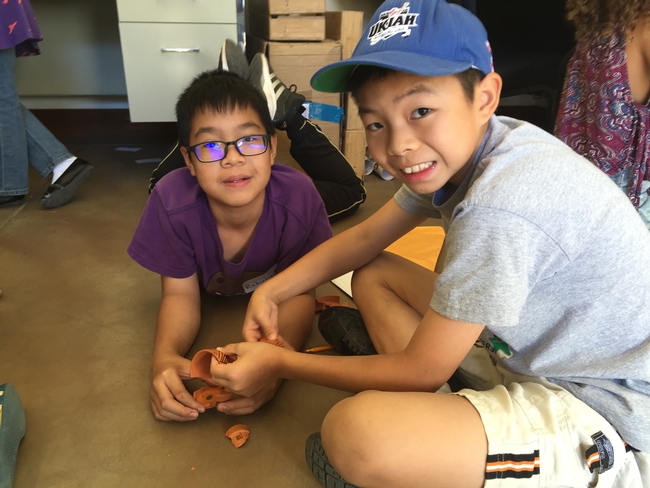
What kind of behavior is appropriate around such important discoveries? Can we touch these markings without degrading them further? Can we show them to the public? How do our tribal partners feel about such finds? How do they affect land management decisions?
The questions led to a partnership with the local Tribal Historic Preservation Officer (THPO) Shawn Padi of the Hopland Band of Pomo Indians and a public event at Hopland, “Archaeology for All." The Oct. 10 event featured UC Berkeley archaeologist Donna Gillette and THPO's Padi and Hillary Renick.
As one of the nine UC Agriculture and Natural Resources Research and Extension Centers (RECs) across California, Hopland REC offers opportunities for research projects across a variety of disciplines, particularly those requiring rangeland, oak woodland and chaparral environments. While respecting that need, the center managers are also committed to being exemplary stewards of the land, setting examples and raising awareness as methods are changed and improved.
Gillette began research at HREC in 2006, when it became evident that some of the ancient petroglyph style markings on the 5,358-acre site were thought to date back two millennia. Many of these markings take the form of circles carved into large rocks and are described as “pecked, curvilinear, nucleated” markings (PCNs). Gillette's work indicated that these markings were in fact between 5,000 to 8,000 years old, pre-dating Pomo culture (as we know it).
Over 100 members of the public attended the Oct. 10 event to discuss local history and cultural markings that might be found on the landscape. They learned why it is important to leave any discoveries of artifacts or markings just as found and report them to a local THPO. Children got the chance to become archaeologists themselves and saw directly how difficult it can be to piece together history when pieces of the story might have been removed or broken.
The challenge of balancing current demands on natural resources and culturally important sites can be complex. However, learning from the history of people in the area is a vital step in understanding sustainable use and behavior for the future. The Hopland Research and Extension Center has benefited greatly from relationships such as those with local THPOs. Their knowledge is integral to future land management decisions.
Author: Hannah Bird
If Bugs Ruled the World...
Can you imagine a world without people? What it would look like? Check out the Life After People...
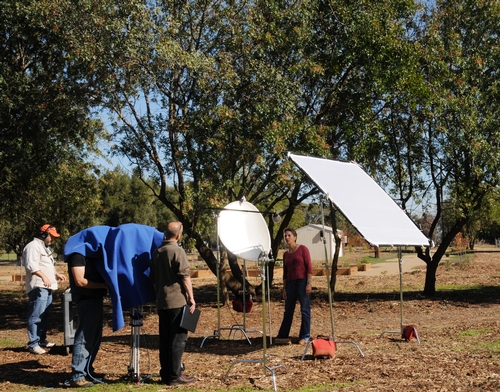
Interview

Bee and Honey


